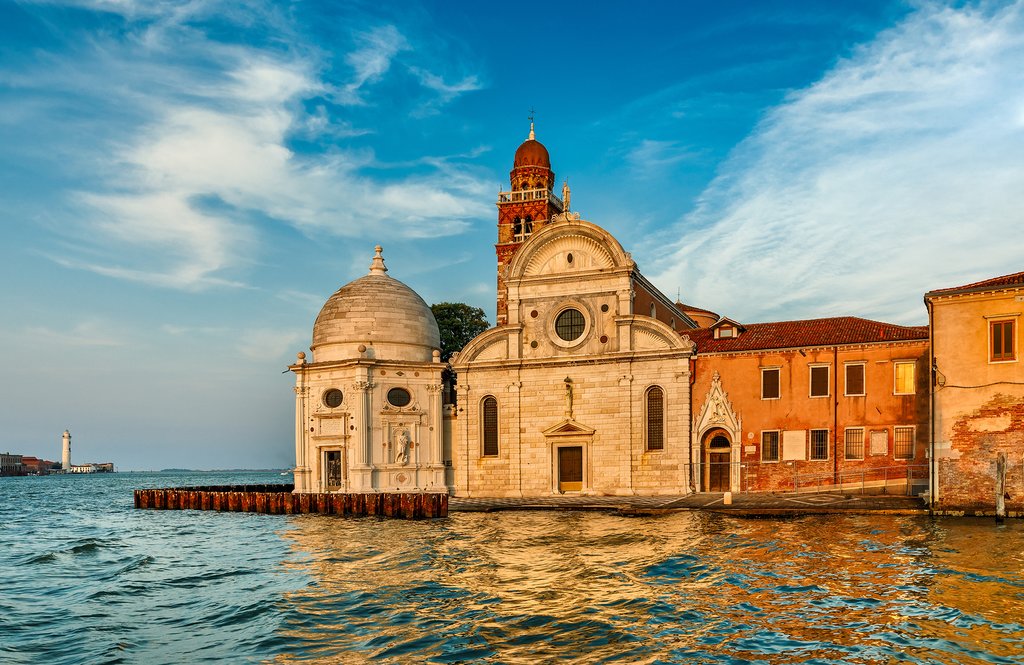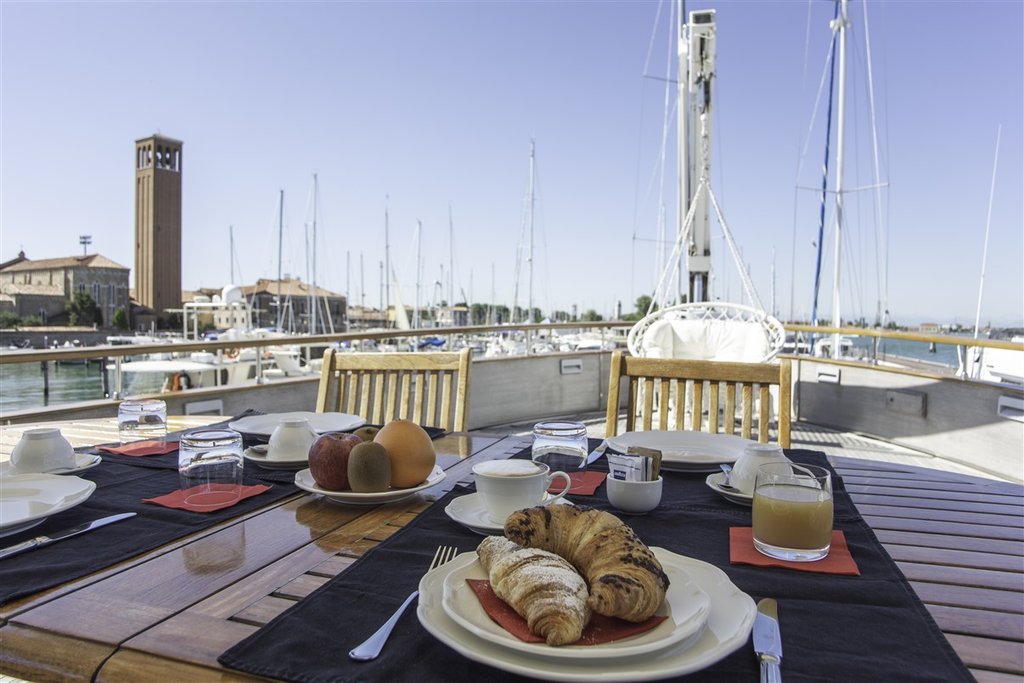Venice Off the Beaten Path
The places below range from specific locations to outdoor activities and span everywhere from the main city archipelago to the outer islands. All of these options are relatively accessible on foot or by water bus. For more on Venice, check out our Ultimate Guide.
Early Mornings on Isola di San Michele

Not much is open in Venice at 7:30 am, but you can visit the tranquil island of San Michele, a short waterbus ride from central Venice. This has been the city’s cemetery since 1807, its high walls and lush, park-like grounds (dotted with trees, unusual in Venice) incredibly atmospheric. Apart from the odd groundsman pruning bushes and a few mourners with flowers, you’ll likely be alone. Pay your respects at the graves of Ezra Pound, Joseph Brodsky, Igor Stravinsky and Russian ballet impresario Sergei Diaghilev (his tomb is draped with ballet shoes).
Visit San Lazzaro

Few visitors make time for the boat ride to San Lazzaro degli Armeni (“Saint Lazarus of the Armenians”), a tiny island dominated by its Mekhitarist monastery (the Mekhitarists are an Armenian Catholic congregation). The Armenian connections are especially illuminating, but you can also tour the attractive gardens and visit the “Lord Byron Room”, where the Romantic poet came to study (in between love affairs) in 1816.
Row Like a Venetian

Yes, you really can learn to row standing up with Row Venice, where 90-minute lessons take place in traditional, hand-built “shrimp-tail” boats or batellina. If you want to row a real gondola, you’ll need a license from the local guild, sign up for 400 hours of training, take an exam on Venetian history and speak fluent Italian.
Chat with a local specialist who can help organize your trip.
Check out the Greek Quarter

Venice once had a thriving Greek quarter, its traditions kept alive today at the church of San Giorgio dei Greci. From the outside, it looks like a typical, Venetian baroque church (with a disturbingly off-kilter bell tower), but inside it’s all Greek Orthodox—dimly lit vaults, an altar of gold-lacquered icons and lavish Byzantine mosaics. Visit the Museo delle Icone next door for a glittering collection of medieval Byzantine-style icons.
Sleep on a Yacht

More and more visitors are opting to stay on the “boat hotels” of Marina Sant’Elena at the eastern end of Venice. The neighborhood isn’t far from the main attractions but remains a low-key, residential area with a handful of local restaurants and bars. “Boat and Breakfast” is offered for reasonable rates on a handful of luxurious yachts, like Yacht Bert B&B—go to sleep with the lagoon lapping beneath you. For more unique lodging options in Italy, check out this article.
Explore San Pietro di Castello

This tiny island is connected to the main part of Venice by two bridges but feels like another world. Few tourists make it out here, despite the presence of the immense Basilica di San Pietro di Castello, once the city’s cathedral, with origins in the 8th century. The interior is relatively bare by Venetian standards, but some of the treasures inside include “St Peter’s Throne” incorporating an ancient Arab funeral stele with inscriptions from the Koran, Pietro Liberi’s vivid “The Plague of Serpents”, and a fragment of an ancient Roman mosaic that decorates the Lando Chapel.
Kayak the Lagoon

Venice Kayak offers the chance to paddle your way along the Grand Canal, or (better) a full day around the Venetian Lagoon, taking in Burano and Torcello—you’ll be surprised how quickly you leave the hustle of the city behind. Kayaking the remaining marshes and mudflats of the lagoon brings home just how bizarre Venice is—the current city was built on low-lying islands just like these.
Make a Carnival Mask

For a more creative take on Venice, take a course on carnival mask making from a local master. Carnevale has been a major celebration in Venice for centuries, with masks appearing around the 13th century. Venetians used them to conceal their identity at illicit parties, and today selling ornate, hand-made masks has become a staple of the tourist trade. Tour companies offer production classes where you learn how to make your own papier-mâché mask, or decoration classes, in which paints and other materials are used to decorate your mask.
Take a Literary Pilgrimage

Venice has inspired countless writers over the years, but evidence of their time here is often hard to find. An ornate plaque at the gates of the Arsenale commemorates its appearance in Dante’s Inferno, while Doge Cristoforo Moro—who some believe was the model for Othello—is buried in San Giobbe church (legend has it that Desdemona lived at the Palazzo Contarini Fasan). Poet Carlo Goldoni was born in the Palazzo Centanni in 1707, now a small museum dedicated to his memory.
Goethe is commemorated by a small plaque overlooking Ponte dei Fuseri (“Goethe lived here 28 Sept-14 Oct 1786”), while Lord Byron’s former lodgings at the Palazzo Mocenigo are similarly commemorated—Byron's plaque faces the Grand Canal and is best viewed from the water. The Victorian poet Robert Browning died in the Ca’ Rezzonico (now a museum) in 1889, the event marked by a plaque on the side wall (“Open my heart and you will see, graved inside of it, Italy”).
Henry James is thought to have based the action in The Aspern Papers on the gardens of Palazzo Soranzo Cappello. Ernest Hemingway loved Venice—he was a fixture at Harry’s Bar, where his table still stands. Writers and long-time Venetian residents Ezra Pound and Joseph Brodsky are both buried on the aforementioned San Michele.
